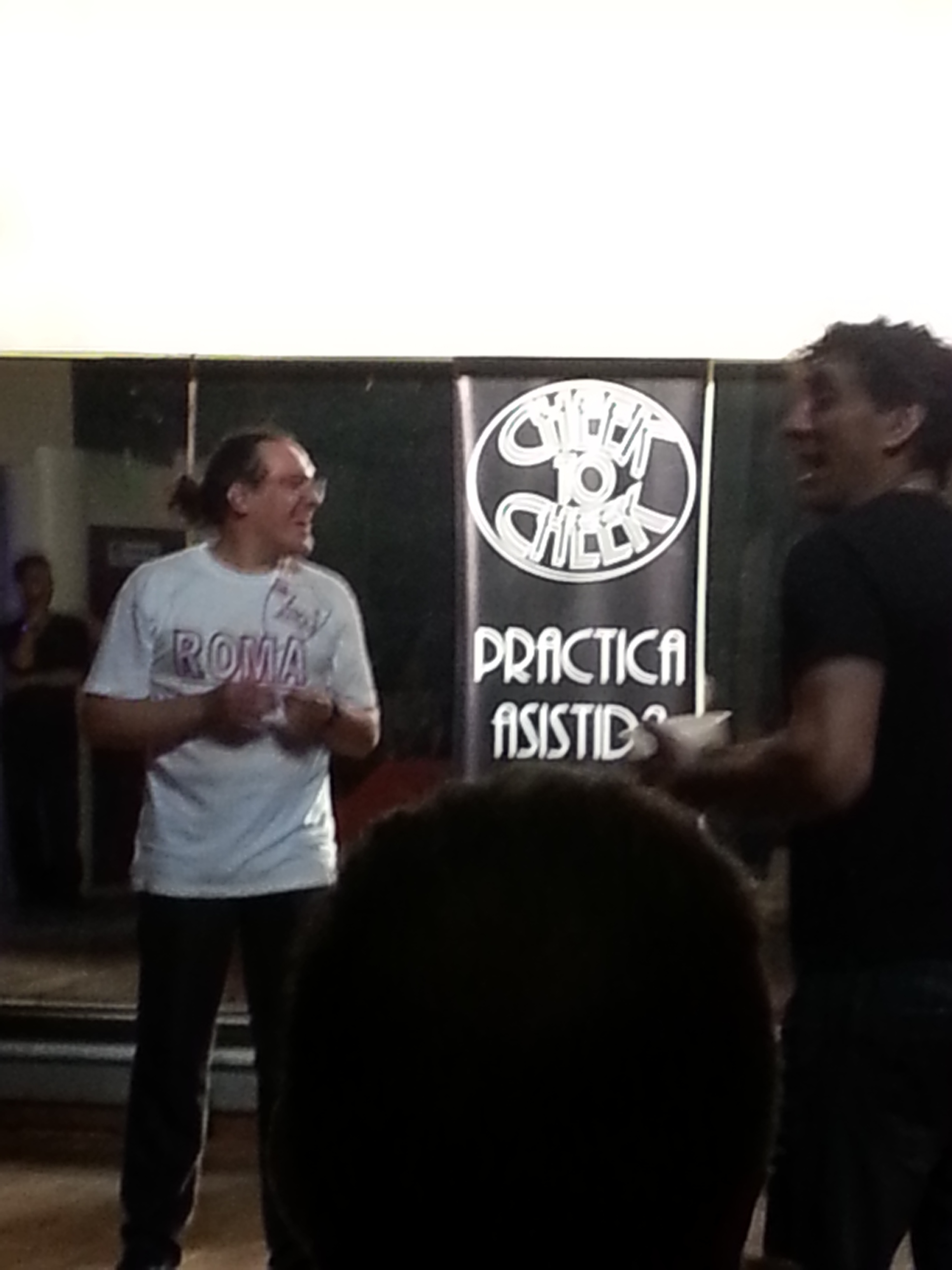Caricias at Imagen Club
- Av Dr. Ricardo Balbín 4699
- Entrada (including class): 70 pesos
- Flan and a bottle of water: I forget!
- Taxi home: 120 pesos (ouch)
This visit, I am trying out milongas further away from my old stomping grounds of Congreso. Tuesday night, I took Margaret and Ned's advice to check out Caricias, 10 km. out from where I am staying in Almagro.
Tuesday was the end of a four-day holiday weekend. Add to that the fact that it was pouring rain (get soaked WITH a coat on kind of rain), and the turnout was apparently quite small. I sat at a table with one woman who had never been to the club, and another who recently started going to Caricias. The other two people who had reservations at the large table, never showed up.
Elisa, Bettina and I had a lot of fun chatting during the evening. Every time I sat down, they pounced on me: "Is he any good? How was that?" Since they are not (yet) regulars, they couldn't give me much help, but we shared information as it was obtained. I know the guys were doing the same thing, because they were no more subtle about it than we were.
Bettina thought I should have a picture of me in the milonga.
Birthday parties at milongas
I have seen many birthday parties at milongas. Often, people sit at a bigger table, and have cake, and are rowdier than usual. This time, the party spread into a full-on, full-milonga party. A tanda a Rock 'N Roll wandered into three cumbias, a merengue, and a snaking conga line around the dance floor. I would have taken pictures, but you know I was in that conga line! An acquaintance of mine from last week was part of the party crowd, so I got included, which felt nice.
I have never seen such a prolonged break from tango at a milonga. It made the energy of the evening really pick up, and everyone got very animated and got out on the dance floor with fervor for the next few tandas. One old guy I danced with ran me into people several times in one song because he decided to show off.
The man I already knew asked me to dance again, and we also had a very spirited tanda. It was romantic tango, and as we dance well together, it was really enjoyable for the "feeling" as many Argentines would say. I like dancers who listen to the follower's body and make the dance a team effort.
And more unusual happenings
I arrived too late to really take the lesson, but there was one woman dancing with a Japanese tourist who was leading. The woman I was sitting with was impressed with how good the woman could lead. I thought about doing the same, but hesitated because in the past, if I led, none of the guys would ask me to dance.
HOWEVER, right when I decided to leave, a milonga tanda started. The woman at my table looked in vain for a partner, and then sat bouncing with the rhythm. Then the other woman who led danced by, and I looked at Bettina and asked if she wanted to dance. She leaped up from her chair, and off we went.
I was in heels and she was larger than I am, but she followed well. For those of you who have experienced my Naughty Toddler exercises, I had a traspie naughty toddler: she did quick-quick-slow steps almost automatically. I had to really work to get her to play with the rhythm at first, but it was fun because she is a good dancer.
I have not led in a traditional milonga since back when I couldn't understand Spanish. I enjoyed showing up most of the guys :-)
Pugliese can be fun
The organizer for the milonga obligingly found me a taxi driver to take me home. He was apparently there to drive someone else home later. He protested that he didn't want to drive me home when he hadn't danced with me, so I put my shoes back on, and got out on the dance floor.
"I didn't even see you until you led that milonga! That was fabulous! I really like how you dance milonga!" he told me enthusiastically. It's funny how behavior that makes the older men ignore me, makes the younger men dance with me.
We had a great tanda, with a lot of musicality. Turns out he is a DJ, so that would make sense.
When I finally got home around 2 am, I was too jazzed to sleep for about an hour. That may explain why I am home tonight, not out dancing. It's only 10:30 PM, but I am about ready to sleep.
















